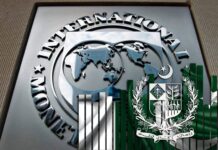Pakistan has emerged as the sixth-largest solar energy market globally, with its rapid transition to renewable energy offering critical lessons for other developing nations, according to a recent World Economic Forum (WEF) report.
The report noted that Pakistan’s energy sector has long grappled with circular debt, power theft, and transmission losses, leading to frequent blackouts and escalating electricity costs. Amid these challenges, the country’s ideal climatic conditions — over nine hours of daily sunlight in most areas — have made solar power a viable solution.
Citing World Bank data, the report revealed that utilizing just 0.071% of Pakistan’s land area for solar photovoltaic (PV) systems could meet the nation’s electricity demand. However, renewables like wind, solar, and biomass currently account for only 5.4% of the installed power generation capacity of 39,772 megawatts, while fossil fuels dominate at 63%, followed by hydropower at 25%, according to the National Electric Power Regulatory Authority.
The WEF attributed the surge in solar adoption to declining solar panel prices and soaring grid electricity tariffs, which have risen by 155% over three years. The report also highlighted China’s role, noting that Pakistan is now the third-largest importer of Chinese solar panels, with shipments totaling 13 gigawatts (GW) in the first half of 2024 and projected to reach 22GW by year-end.
“Industrial, agricultural, and residential sectors are driving this shift, spurred by inefficiencies in the state-owned energy system and the government’s inconsistent energy policies,” the report stated. Grid electricity demand dropped by over 10% last fiscal year as consumers opted for solar self-generation to counter inflated tariffs.
The report also emphasized the need for supportive policies, such as extending credit for solar installations in off-grid areas and unbundling customer categories, to further enhance renewable energy adoption.
“Pakistan’s experience demonstrates the importance of balancing policy innovation with market adaptation to create sustainable and equitable energy solutions,” the WEF concluded.
























